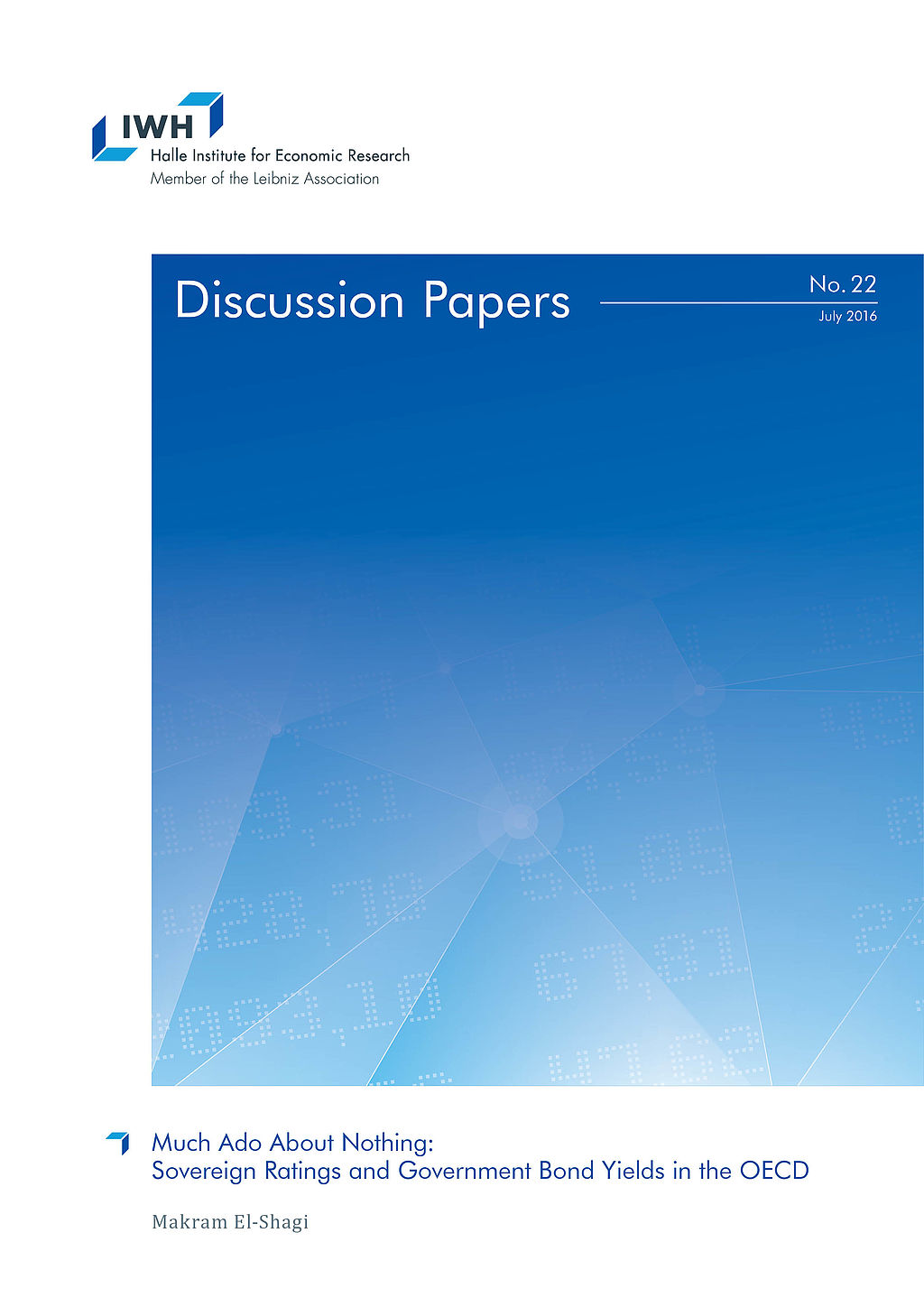
Much Ado About Nothing: Sovereign Ratings and Government Bond Yields in the OECD
in: IWH Discussion Papers, No. 22, 2016
Abstract
In this paper, we propose a new method to assess the impact of sovereign ratings on sovereign bond yields. We estimate the impulse response of the interest rate, following a change in the rating. Since ratings are ordinal and moreover extremely persistent, it proves difficult to estimate those impulse response functions using a VAR modeling ratings, yields and other macroeconomic indicators. However, given the highly stochastic nature of the precise timing of ratings, we can treat most rating adjustments as shocks. We thus no longer rely on a VAR for shock identification, making the estimation of the corresponding IRFs well suited for so called local projections – that is estimating impulse response functions through a series of separate direct forecasts over different horizons. Yet, the rare occurrence of ratings makes impulse response functions estimated through that procedure highly sensitive to individual observations, resulting in implausibly volatile impulse responses. We propose an augmentation to restrict jointly estimated local projections in a way that produces economically plausible impulse response functions.

Exit Expectations and Debt Crises in Currency Unions
in: IWH Discussion Papers, No. 18, 2015
Abstract
Membership in a currency union is not irreversible. Exit expectations may emerge during sovereign debt crises, because exit allows countries to reduce their liabilities through a currency redenomination. As market participants anticipate this possibility, sovereign debt crises intensify. We establish this formally within a small open economy model of changing policy regimes. The model permits explosive dynamics of debt and sovereign yields inside currency unions and allows us to distinguish between exit expectations and those of an outright default. By estimating the model on Greek data, we quantify the contribution of exit expectations to the crisis dynamics during 2009 to 2012.

Flight Patterns and Yields of European Government Bonds
in: IWH Discussion Papers, No. 10, 2013
Abstract
The current European Debt Crisis has led to a reinforced effort to identify the sources of risk and their influence on yields of European Government Bonds. Until now, the potentially nonlinear influence and the theoretical need for interactions reflecting flight-to-quality and flight-to-liquidity has been widely disregarded. I estimate government bond yields of the Euro-12 countries without Luxembourg from May 2003 until December 2011. Using penalized spline regression, I find that the effect of most explanatory variables is highly nonlinear. These nonlinearities, together with flight patterns of flight-to-quality and flight-to-liquidity, can explain the co-movement of bond yields until September 2008 and the huge amount of differentiation during the financial and the European debt crisis without the unnecessary assumption of a structural break. The main effects are credit risk and flight-to-liquidity, while the evidence for the existence of flight-to-quality and liquidity risk (the latter measured by the bid-ask spread and total turnover of bonds) is comparably weak.



